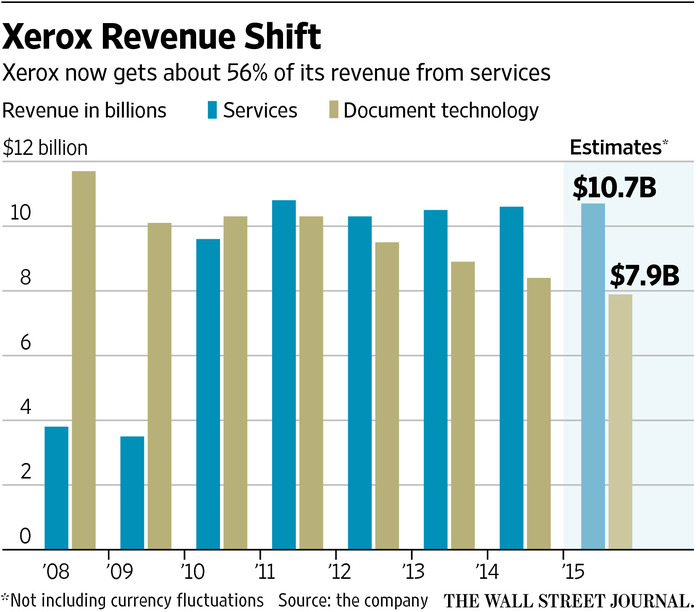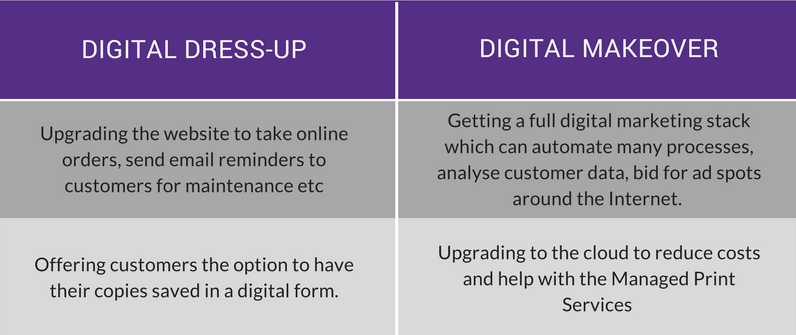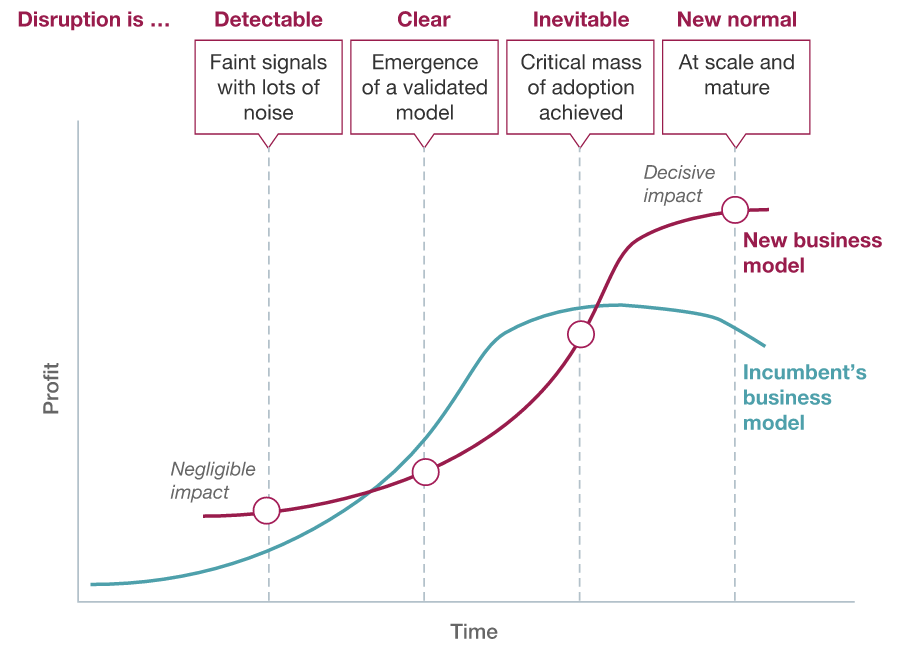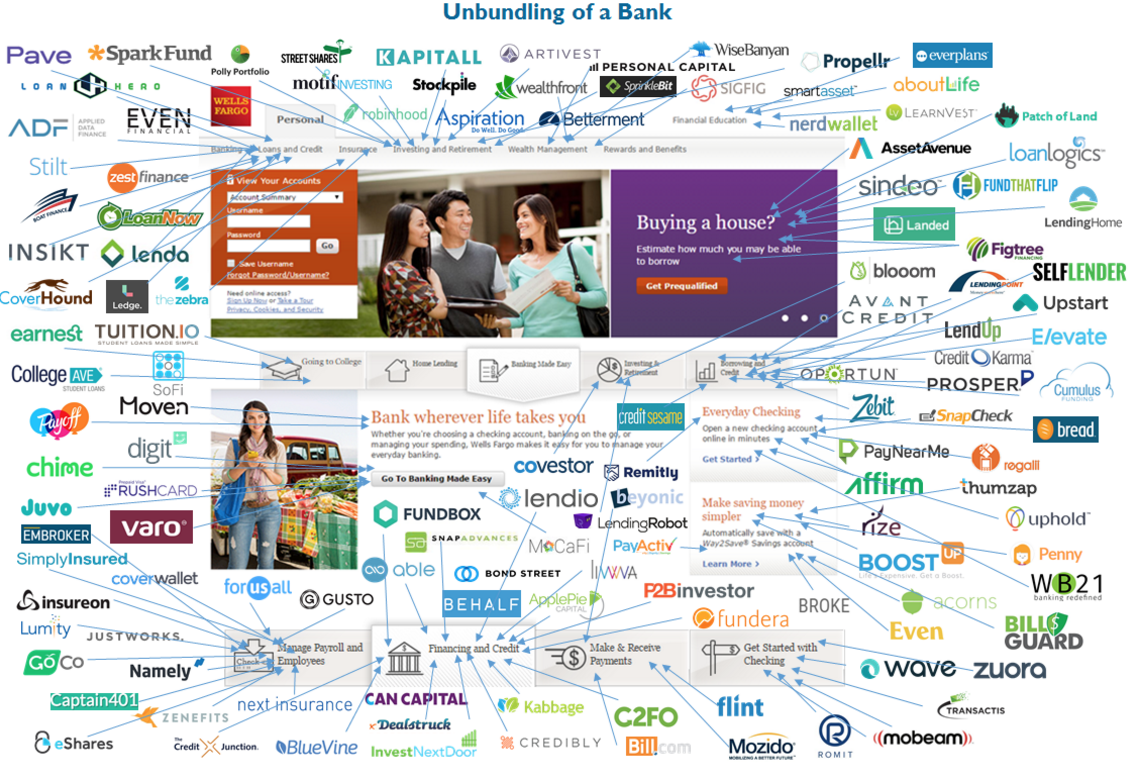For those who haven’t seen House of Cards (a Netflix’s original TV series), there is a scene where just before getting fired, the Washington Herald’s chief editor says:
“Twitter, blogs, enriched media, they’re all surface, they’re all fads.”
He believes the newspaper’s only way to survive is to stick to the tradition, to hard news. In reality (and in the TV series too), print media is not doing so great. On the other hand, digital media, especially non-news outlets, has been thriving.
As you will see throughout the article, those who refuse to adapt, will fall behind. And those that embrace digital transformation (such as the one bringing you House of Cards) will leap forward. But what exactly does a digital transformation involve?
Clearing up the confusion
So much content has been floating around these days about “Digital Transformation” and it seems like a magic bullet. It sparks FOMO (fear of missing out) which propels people to jump on the bandwagon without fully understanding it.
These are a few typical sentiments people have for digital transformation:
- Sceptical
- Scared/Confused
- It-is-not-gonna-happen-to-us
- Follow the herd
The truth is: there is a high chance that when somebody says “digital transformation,” they mean something else. By sharpening your understanding of this muddled area, you’re better equipped to tell fact from hype, and make better decisions for your company’s future.
Now let’s look beyond the surface level and see if the proposed activity is truly transformative.
Digital dress-up or digitisation
This is like putting on fashionable clothes to look more impressive. In this case, the “clothes” are cool digital technologies.
Activities such as building a website for your business where none exists, making an online store that lets people browse products and create orders without payment or other integrations.
Digital makeover
This maintains what the business is doing but seeks to do it better by leveraging digital. Similar to when a person gets a makeover, it doesn’t necessarily change who they are underneath.
Examples:
- A marketing department rolling out a new data analytics platform that allows the company to customise content and target readers more precisely.
- An IT division upgrading their systems to the cloud to reduce maintenance costs and improve efficiency.
A word of caution: If the business is already sick, a digital makeover might only extend its life by a few more years; or worse, it could be a case of throwing money after bad.
Digital transformation
To be a truly transformative exercise, change needs to happen to the business model, processes and people as well.
“Businesses don’t transform by choice because it is expensive and risky.”
So much is the effort required that businesses only ever undergo digital transformation when they have failed to evolve, when competitors are following too close, when market shifts throw everything into chaos.
Xerox is a good example of successful digital transformation and the importance of acting fast before your old model is completely dry of profit.
It went from a hardware-focused company to one who derives more than half of its revenue from digital services.
 Source: Wall Street Journal
Source: Wall Street Journal
Problem
Xerox’s margins and market share were suffering due to competition from Asia. By 2000, Xerox’s more complicated, expensive line of copiers and printers resulted in net losses of $273 million.
Action
Essentially, what Xerox did was acting before the disruption to its core copier and printer business became too big.
They adopted a dual transformation path.
1. Repositioning the core business to adapt to the changing environment:
Machines that could match competitors’ offerings in terms of price and simplicity, yet outsmart them in terms of technology.
2. Branching out into a separate digital offering that will eventually be the main source of growth:
Xerox Global Services was formed to handle document management and other back-office processes for large organisations.
And what could have happened if Xerox had stopped at only digital dress-up or makeover?

All of those measures would have been sufficient to keep Xerox going for a while, before competitors come in with a better business model, and disrupt the incumbent by unbundling or decoupling (which we’ll discuss later).
Summary
To recap, next time someone says they can offer “Digital Transformation,” check if their proposal:
- Doesn’t just present the issue through a single lens, e.g. marketing or IT
- Goes beyond technology and considers the human and business side of things
Digital disruption
Businesses tend not to consider digital transformation before it is too late, i.e. when digital disruption is inevitable.
In another blog post, we’ve said: disruption occurs “when a business creates or employs a technology in a new way, forming a business model that provides an edge over competitors.”
As startups and established companies are often put on two opposing sides, let’s look at a typical journey of how digital disruption affects both.
 Source: McKinsey
Source: McKinsey
To put this graph into context, consider the story of Netflix and Blockbuster. Back in 2000, the then start-up Netflix proposed to become the incumbent’s online service provider with a 49% equity price tag. Blockbuster declined, focusing on opening new retail stores and entering new markets instead.
Meanwhile, Netflix gained traction with its mail-based DVD rental service, before shifting its focus to online streaming a decade later. The incumbent – Blockbuster – was comfortable with a 45% market share in 2003, before going out of business seven years later.
Another example of disruption with a more digital focus is Amazon and Borders. In 1995, Amazon made its debut as an online book store, and over time, has moved to e-books and an all-you-can-get e-store nowadays. Borders with hundreds of bookstores globally was late to the digital world, while overinvesting in physical stores and CD sales. The incumbent ceased its operations in 2011.
Self-disruption
To survive in a volatile environment, companies heading towards the top of the S-curve of the incumbent’s model (as shown in the graph above) should not rest on their laurels.
Sometimes, they need to go against their corporate instincts and:
- Undergo a full blown digital transformation
- Cannibalise their core business to make way for something new
Understandably, this is hard for established companies. But it doesn’t mean impossible. Remember Xerox and the dual transformation path? The incumbent can fix their position in their existing turf, while starting something new on the side that may result in self-disruption.
Back to the story of print media
Newspapers initially put themselves online (digital makeover) yet they did not develop a different business model. They could have gotten rid of selling ads, given all their journalists freedom to specialise in niche topic areas and allowed people to subscribe to each of them. i.e. run a blogging network.
Or the complete opposite direction could also yield tremendous opportunity. German media company Axel Springer wasn’t satisfied with just a digital makeover.
From 2005, the business started acquiring new digital properties and moved to online classifieds. Moreover, it also divested some of its biggest print media products, accounting for 15% of its sales in 2013. Today, the media company derives 70% of its EBITDA from digital. Now that’s truly digital transformation.
How do you identify threats and opportunities?
Once you have opened up to the possibility of disruption, the next step is to formulate a strategy. It would help detect digital disruption early on and make pre-emptive moves.
Supply and demand lens
The framework below from McKinsey gives you 6 areas where threats can be turned into opportunities. It looks at how supply and demand would be changed when disruption is ripe.
 How vulnerable are you to digital disruption? Source: McKinsey
How vulnerable are you to digital disruption? Source: McKinsey
To make it easier to digest, let’s look at some examples of companies disrupting industries through the Supply/Demand lens.
Undistorted demand:
- iTunes lets customers buy individual songs rather than whole albums
- Travel sites like Expedia makes it easier to book trips anytime anywhere
Unconstrained supply:
- Airbnb lets consumers become suppliers, or opens up lodging supply
New market:
- Sites like comparethemarket.com removes the middleman such as brokerage
New value proposition:
- Domino’s pizza delivery tracking gives real-time insights
- BeerDroid offers connectivity for home beer brewing hobbyists via a mobile app
Reimagined business system:
- Dropbox transformed storage from a (hardware) product to a digital service
Hyperscaling platforms:
- Amazon’s Kindle Direct Publishing connects authors directly with readers
Unbundling and decoupling lens
Another way to spot threats and opportunities is by looking at how competitors may unbundle or decouple the components of your products.
Unbundling, in a similar vein with “Undistorted demand” mentioned above, allows consumers to only buy what they want.
Take a look at the picture below which shows how various disruptors have unbundled the services of a traditional bank. Essentially, they zoom in on a specific consumer need (e.g. wealth management) and try to do it better.
 Source: CB Insights
Source: CB Insights
Next, decoupling is the “separation of consumption activities that traditionally go together, hand-in-hand.”
In the diagram below, disruptors separate the non-value creating portion from consumption activities and only focus on the value creating portion.
Why watch ads when you can watch uninterrupted TV shows on TiVo? Why pay for games when you can play Zynga games for free on social media sites? Why listens to songs you don’t like on the radio when you can use Pandora for personalised playlists?
 Source: European Business Review
Source: European Business Review
While there are plenty of ways competitors can sneak up on you, there are also numerous routes you can take. If it calls for a digital transformation with potential self-disruption, just remember:
“Companies rarely die from moving too fast, and they frequently die from moving too slowly.”
 Click to enlarge
Click to enlarge

